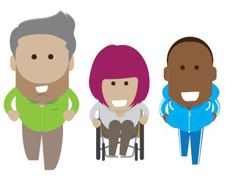Recommended reading
What I want to talk about by Pete Wharmby

Use the following strategies in a daily timetable at school. Parents and carers can ask school to see if they can use some of these for their child.
Allow time for a Specialist Interest. This is sometimes referred to as a hyper fixation. This is an activity a young person likes doing.
Specialist Interests are a young person’s ability to cope with day-to-day challenges. They help them cope with the social world. Masking/Camouflaging the truth takes up lots of energy and well-being.
Specialist Interests are soothing and comforting. They allow a young person to de-stress and relax. A child can do these for 10 mins twice a day.
What I want to talk about by Pete Wharmby
Have an Emotionally Available Adult to check-in with the young person. This could be for up to 3 minutes, 3 times per day.
Build up a relationship with the child (ask them about their Specialist Interest as a starter!). Let them know you are there!
Overtime, introduce certain strategies such as emotion cards and talking mats. Don't overwhelm a young person – a quick check-in in a casual way could be all they need.
A Therapeutic Treasure Deck of Strengths and Self-Esteem by Dr Karen Treisman.
Devise a Sensory Diet with the main dish being physical movement.
Proprioceptive Sense is in our muscles and joints. Proprioceptive is your body's ability to sense movement, action and location. Movement can send messages to the child’s brain that they are safe and helps keep them calm.
There are Sensory Circuits to consider or many ways to encourage the pupil to move their bodies. All without drawing attention to the fact they need it. Sensory circuits are short physical activities that help alert, organise and calm.
Do an internet search for Proprioceptive Activities in school – for tons of ideas!
Understanding your child’s sensory signals by Angie Voss.
Young people need to feel respected and supported with their autistic identities. This can result in them masking less.
Autistic people shouldn't need to change to fit in to the environment. It needs to change to support their neurodiversity.
Schools and other settings should aim to do this at a whole-school level. It increases understanding of autism within the school community. This includes staff, pupils, and parents – including parents of non-autistic children. The whole school community should see autism as a difference, not a weakness.
The Neurodiverse Classroom by Victoria Honeyborne.
Parents are the experts on their own children.
Parents of autistic children who mask often report feeling unheard. They feel shut down or even judged as a bad parent when they report a picture of their child that is different to the one seen in school.
Many autistic children will present differently at home. This is often due to feeling safe. They feel they can be their true self at home. This means they feel less pressure to mask.